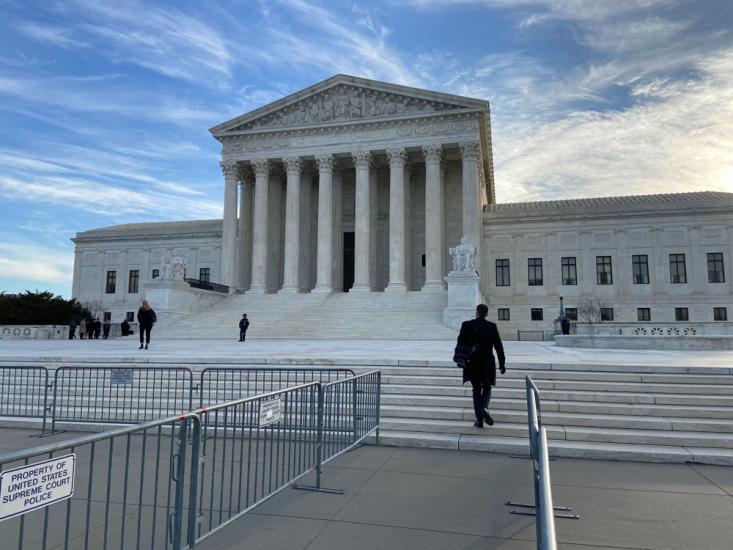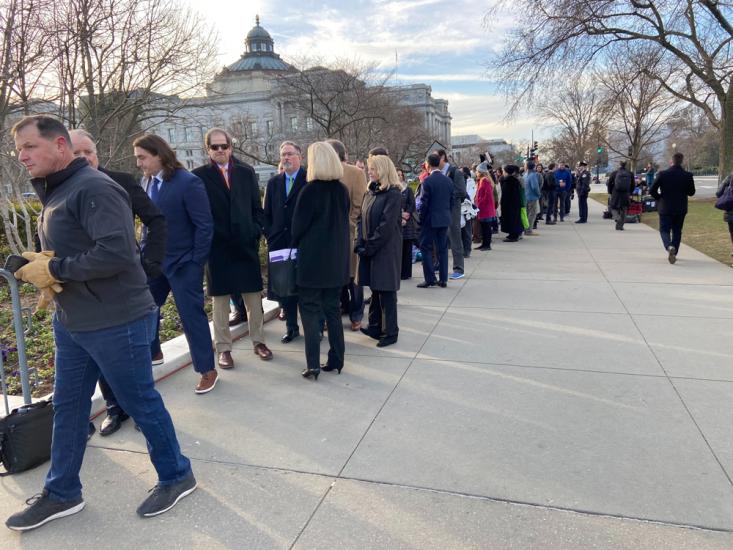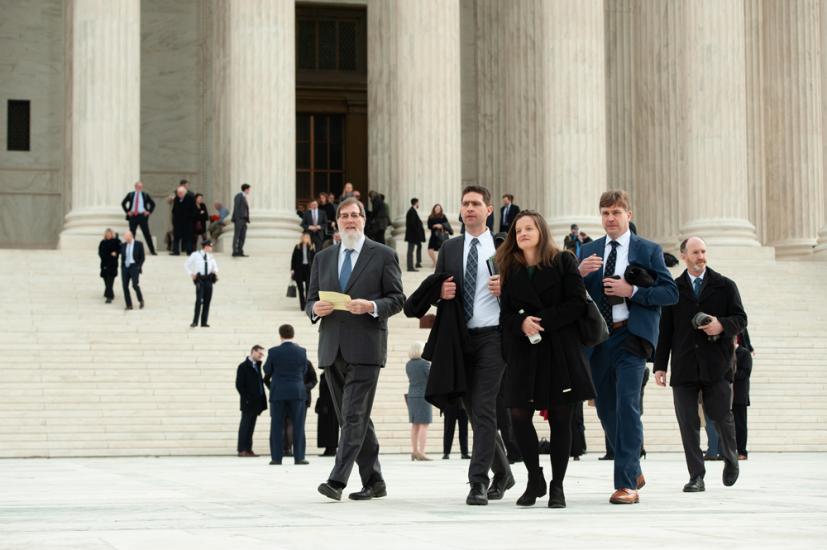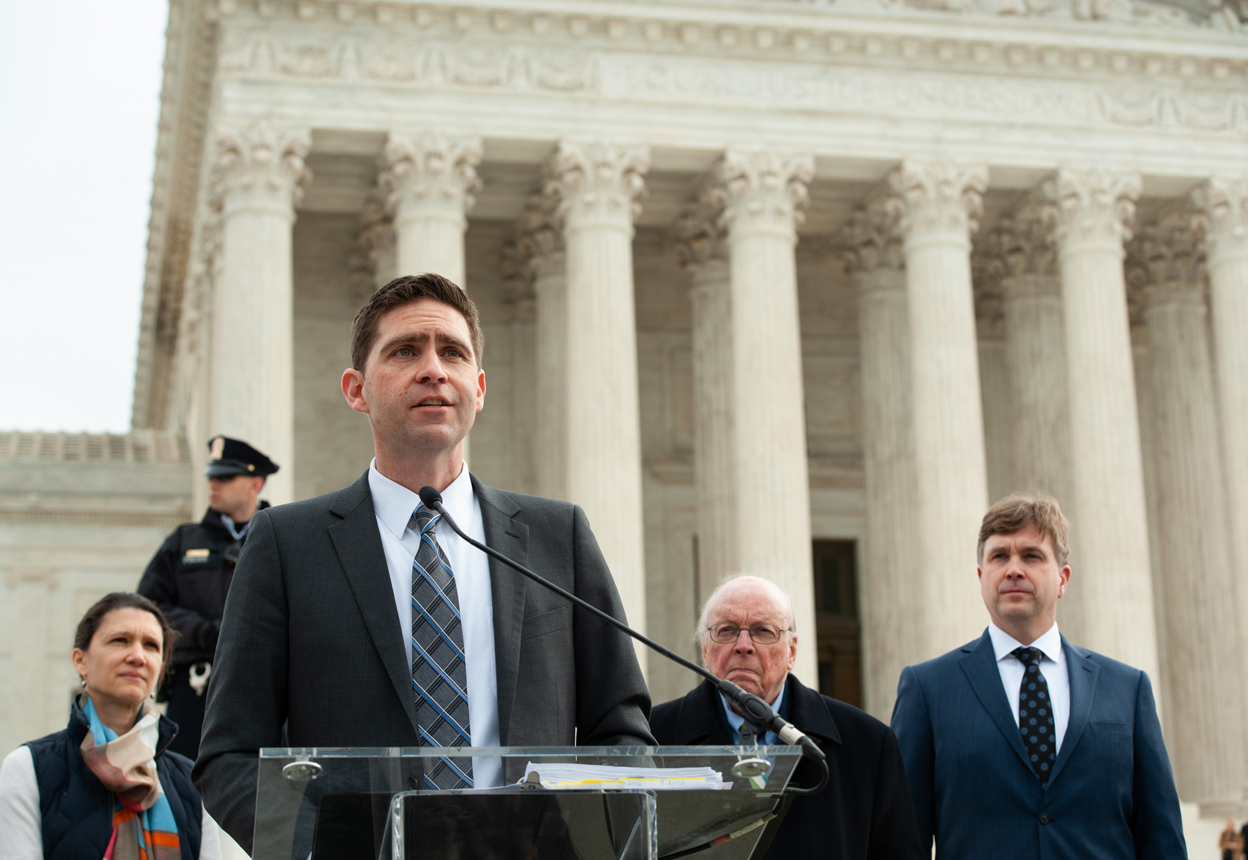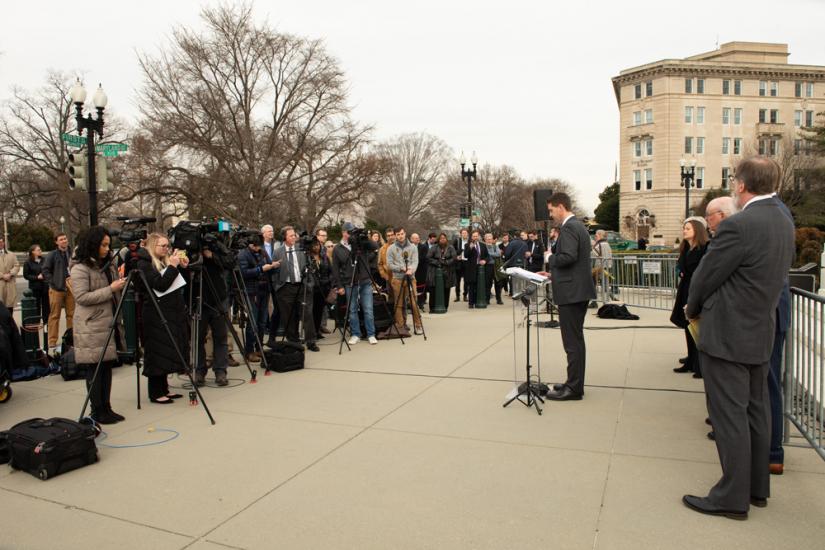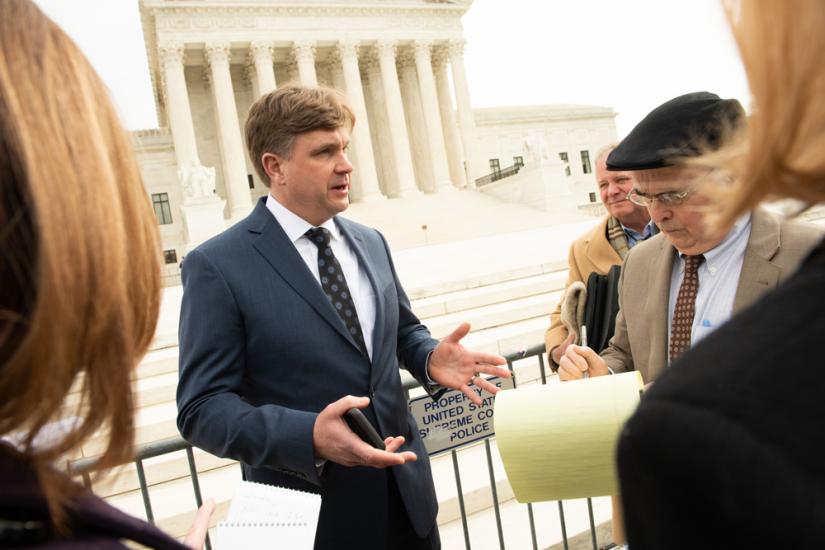From the steps of the Supreme Court
Months of preparation boiled down to 30 minutes Monday as SELC and its co-counsel made their case before the Supreme Court of the United States. At issue is a permit from the U.S. Forest Service for a major pipeline carrying fracked gas to cross under the Appalachian Trail.
It was the unique nature of the Forest Service authorization which brought the issue before the nation’s highest court. In December of 2018, the U.S. Court of Appeals for the Fourth Circuit agreed with our clients that the Forest Service did not have the authority to grant the crossing because the trail is a unit of the National Park System. No oil or gas pipeline has ever been built across the Appalachian Trail on a new right of way over protected federal land. Existing pipelines do cross the trail but on state and private land, or under a pre-existing right on federal land.
“This pipeline has other routes available to it but pipeline developers refuse to consider them, demanding that they be able to cross on our public lands instead,” said Program Director DJ Gerken at a press conference held after the hearing.
We’re at #SCOTUS representing five #Virginia conservation groups in U.S. Forest Service v. Cowpasture River Preservation Association. This case involves 1 of the 8 required permits the Atlantic Coast Pipeline currently lacks. pic.twitter.com/MseUepylit
— SELC (Environmental Law) (@selc_org) February 24, 2020
First-come, first-serve public seating at the Supreme Court is limited and for many hoping to be in court for the arguments, the wait to get in began the night before when some started standing in line as early as 7 p.m. Sunday. By morning, the line wrapped around the block. Following the argument, SELC attorneys, clients, and partners gathered behind a podium where they spoke with national and regional press.
The permit before the Supreme Court is one of 8 currently on hold for the Atlantic Coast Pipeline, a 600-mile project running from West Virginia, through Virginia and on into North Carolina.
“Have no doubt, this pipeline is unreasonable and risky and has a long road ahead of it no matter what happened here today,” said Gerken during the press conference.
A decision in the Supreme Court case is expected no sooner than late spring.
To read how the case was presented to the justices, you can access transcripts of the hearing here.
A video of the press conference is available here.
To learn more about the many challenges still facing the Atlantic Coast Pipeline, visit StopTheACP.org.

